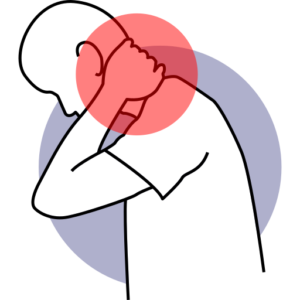CERVICAL STENOSIS TREATMENT

Stenosis (narrowing of the channel) is a condition that can occur in the neck or lower back. Cervical stenosis refers to the narrowing of the channel in the neck area. Patients may experience this condition as they age, or it can be caused by calcification in the spine, thickening of ligaments, or herniated discs. The effects of cervical stenosis can include difficulty controlling and using muscles, difficulty balancing, and bowel and bladder problems. When patients experience these symptoms, they may visit a doctor.
Cervical Stenosis (Narrowing of the Canal) What is it?
The cervical spinal column in the neck area has 7 vertebrae. Each of these has a canal through which the spinal cord passes. The cervical section of the spine is an important point for controlling our movements. Therefore, it should be flexible and have a structure that protects the materials inside it. In case of stenosis, or narrowing, damage occurs to the spinal nerve root in the neck area. The resulting disease is called cervical stenosis (narrowing of the canal in the neck).
Causes of cervical stenosis
Aging is the main factor affecting the formation of the canal narrowing (stenosis). Cell’s difficulties in self-renewal can lead to thickening of tissues and thus, narrowing. However, other factors can also play a role, such as; congenital structure of the spine, existence of tumors, complications during birth, previous history of herniations and curvatures of the spine.
Diagnosis of cervical stenosis
Patients generally seek medical attention with arm and leg pains. To understand the cause of this, imaging tools are used. The deterioration condition is determined after magnetic resonance imaging (MRI) and tomography methods and the diagnosis is made.
Symptoms of canal stenosis
The result of canal stenosis can lead to two different conditions. One of these is cervical myelopathy. In this case, the compression of the spinal cord results in loss of function in the upper and lower extremities. Cervical radiculopathy is the loss of function in the upper extremity as a result of canal stenosis. Generally, the symptoms of these two conditions are parallel and can be experienced by the patient as follows:
In patients with cervical myelopathy, there can be deficiencies in hand skills. They may have difficulty holding objects and often drop them. They may be unable to perform buttoning and other skills. In addition, they may have difficulty balancing and walking. They may need to hold on to something while walking. There is a noticeable difference in their gait and occasionally bladder and intestinal problems may be encountered.
In patients with cervical radiculopathy, there is usually pain that starts in the neck and spreads to the arms. This pain is also present in the hands. Additionally, the patient may feel weakness in the arm muscles.
What methods are used in the treatment of cervical stenosis?
The first treatment option for cervical stenosis is non-surgical methods. Changes are made to the patient’s current routine, such as recommending that they use their computer at eye level, changing their chair, or increasing their activity throughout the day. Additionally, the patient can use over-the-counter pain relievers when experiencing pain. Resting or sitting for long periods of time can be detrimental to the condition and thus should not be recommended as a treatment.
For milder cases of cervical stenosis, a soft neck brace is recommended. The patient is educated about cervical stenosis and is advised to be mindful of their activities and avoid those that may cause damage. If necessary, injection therapy can be applied. Cortisone is injected into the nerve to reduce damage and pain caused by nerve compression.”
Surgical procedures
Surgical methods for cervical stenosis are methods that can be performed from the front or back of the neck. Before the surgery, the suitability of the patient for surgery is checked and the degree of compression and compression of the nerves is determined. Then, a small incision is made and the nerves are reached through the front or back. The tissue that presses the nerve root is removed, and the region is placed with screws. The incision is closed and the surgery is completed. The patient needs to rest after the surgery. The patient continues the treatment stages by using a neck brace and paying attention to their movements.
Why Choose Us?
At Dr Özgür Akşan – Health Türkiye, we have been providing top-quality neurosurgical treatment options for almost a decade under the guidance and leadership of Op. Dr. Özgür Akşan. Our team is comprised of highly experienced and skilled surgeons, including Dr. Özgür Akşan, Dr. Nail Özdemir, and Dr. Feryal Akşan, all of them having more than 20 years of experience in medicine.
We offer a wide range of treatment options for various neurosurgical conditions, including herniated discs, lumbar spinal stenosis, traumatic brain injury, brain tumors, cervical disc herniation, Chiari malformation, carpal tunnel syndrome, and more. Our team is highly skilled in performing advanced neurosurgical procedures, such as microsurgical discectomy, endoscopic discectomy, spinal fusion instrumentation, craniotomy, craniectomy, gamma-knife radiation therapy, and many more.
At Dr Özgür Akşan – Health Türkiye, we are committed to providing personalized care and tailored treatment plans for each patient based on their unique needs and medical history. Our clinic in Izmir is equipped with the latest technology and we are working with private hospitals with state-of-the-art facilities to ensure the highest level of care for our patients.
Choose Dr Özgür Akşan – Health Türkiye for your neurosurgical needs and experience the expertise and care of our highly trained team of neurosurgeons, led by Dr. Özgür Akşan himself.
